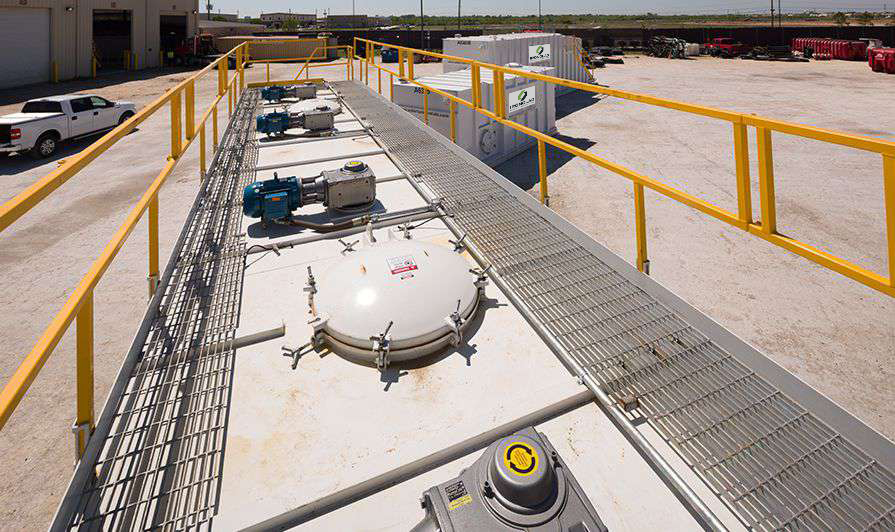Worker Safety At Oil And Gas Extraction Sites II: Precautions For Sampling
The process of sampling has been identified as a task that comes with risks, as stated in the first part of this blog article series.
Sampling is the process of gauging the quality of the product by removing a small amount of it for analysis. This is done to identify the characteristics of the oil or gas in preparation for the next step in the process: refining. In this process, the liquid is accessed from the tank through a thief hatch. A thief hatch is a closable external access found in most tanks that allow workers to assess the levels of the oil and gas in the tanks, or take samples when required. The risks come from the release of hydrocarbon gasses and vapors, which is harmful to workers.
Safety tips for sampling and gauging

Understanding the risk posed by hydrocarbon emissions is only half the battle. The next step is to take the appropriate actions and precautions to ensure oil and gas industry safety standards are properly met.
Undertake safety hatch management measures: This allows for remote sampling or minimizes sampling procedures to reduce risk exposure. Prevention or limitation of exposure is the first step towards ensuring that workers aren’t exposed to hydrocarbon emissions.
Use tanks with dedicated sampling solutions like sampling ports or taps: The use of more advanced tanks that have gas management solutions and dedicated sampling outlets inbuilt is a popular method for reducing the risk of exposure to hydrocarbon gas. It lessens or even eliminates the need to open thief hatches.
Use thief hatch pressure indicators: Thief hatch pressure indicators provide a visual indication of the pressure within the tank in order for workers to assess whether or not the environment is safe to work in or if further precautions need to be taken.
Put air sampling strategies in place: Putting air sampling strategies in place should be done with the help of health and safety professionals in order to assess worker exposure to contaminants such as hydrocarbons. Using a trained and certified industrial hygiene assessment outfit to help establish air sampling practices can help you discover high-risk situations as soon as they arise.
Provide hazard training: Businesses must take steps to ensure that each worker fully understands the content of the training sessions and the precautions that they need to take on site when dealing with gauging and sampling. This includes ensuring signs and hazard warnings posted on-site can be correctly identified by the workers. Workers should also be familiar with using multi-gas and oxygen monitors and understand what the alerts or alarms signify, how to respond to these alarms in terms of initiating safety procedures, and what the limitations of these systems are.
Safety in numbers: As one worker executes the sampling process, ensure that he or she is accompanied by another worker whose task is to ensure that safety procedures are being carried out, and who can initiate rescue actions if the co-worker is exposed to hydrocarbons. The observer should be positioned an appropriate distance away from the thief hatch to ensure that he or she stays away from the area of exposure. Workers should also rotate when conducting sampling to ensure everyone’s mind is fresh when conducting this type of work, and remember all safety procedures due to regular practice.
Access to, and regular use of protective gear: Gear such as flame-resistant clothing and impermeable gloves should be available to workers. Training should also cover lessons on how to wear this gear for maximum protection. It is also important to ensure that the correct type of respiratory protection is used to promote further safety.
Practice safety drills: This includes first aid applications, and emergency medical response so that workers know exactly what to do if there is an incident on-site – whether a worker gets injured or whether identifying symptoms of chemical exposure or oxygen deprivation in the atmosphere is needed for further awareness of surroundings.
Risks involving hydrocarbons are so high that the United States Environmental Protection Agency or EPA has dedicated a whole section of their permits to this –“Requirements for Control Systems for Hydrocarbon Emissions”– to be referred to by oil and gas manufacturers when constructing oil and gas facilities.
At Ironclad Environmental Solutions, we believe that oil and gas safety is essential and offer products like frac tanks, gas buster tanks, and others as part of our oil and gas industry solutions. Get in touch today if you have any questions about worker safety and would like to learn how our tanks enable safe operations.